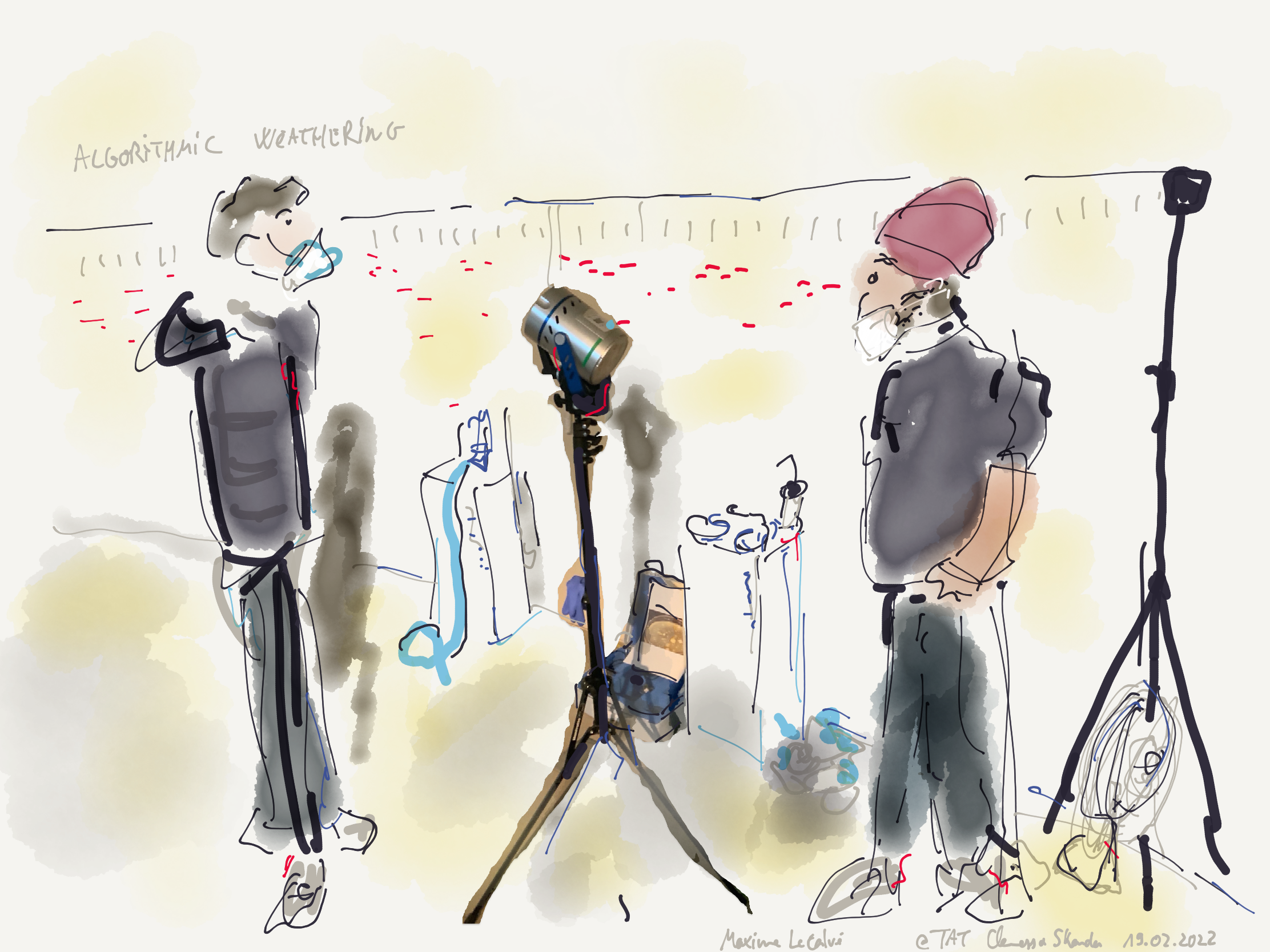The half-year duration of the research process-based Stretching Materialities exhibition at Tieranatomisches Theater has come to an end. The last weeks were full of events, contrasting with the sluggish covid vibe that has plagued most of the exhibition. The pandemic did not seem to restrain much from the experimentation itself, however. Having a public yet intimate place to work, with opening times and visibility, translated into the strong sentiment of having a hub ready for docking new fast-paced projects, such as the Stretching Senses School, or the multiple performances and talks that bloomed nearing the end of the event. What is an exhibition-as-research? The multifarious experimentations to relate space to objects-in-process is part of what “curation” meant in the first place.
“In the seventeenth century Robert Hooke, we might note, was the Royal Society’s first curator of experiments. (The word ‘‘curator’’ was first used to refer to an officer in charge of a museum collection around the same time as the founding of the Royal Society.) Furthermore, the world’s first university museum – the Ashmolean, which opened its doors in 1683 – was also a venue for the public demonstration of scientific experiments.” (Basu & Macdonald 2007, 2)
Experimenting with space, things, and people, the exhibition is an alchemical lab for the making of atmospheres conducive to astonishment, wonder, and knowledge. Bringing the right colors and the right arrangement together, under the right light, with the right timing, and with the right story, curating is an art and a science, as well as a boundary method where scientific and artistic disciplines can overlap and feed each other. Hosting a successful feast isn’t an easy feat: trial and error are part of the investigative endeavor.
Was it an exhibition-as-fieldwork or fieldwork-as-exhibition, or just exhibition-as-place-of-work perhaps? Twice during the last week, a team of DJ and VJ had a gig at the center of the exhibition space, with micro sounds and images captured from the environment: the performance »Scattered Diffusion« by Mascha Kobylenko & Siamend Darwesh was a perfect illustration of the concept of the exhibition. A portable microphone and a smartphone with a microscope add-on were handed out to the participants, wirelessly feeding the node-based mixing software of the two artists standing in the middle of the rotunda. The central round sky-light appliance served as a round projection screen for the images of textile, stone, hair, and many other textures explored by curious hands. Mascha was part of the five mediators that were hired to process our unruly research processes and help make them digestible to the visitors. Soon, members of that team came to us with new ideas for participative performances and installations. They participated in stretching the exhibition space and playing around with the boundary conditions of our curatorial experimentations.
The previous week, Clemens and Skander were setting up the ultimate phase of the microbiological air sampling, a microperformative installation to which the visitors contributed with body particles and dust from their own habitats. Among other atmospheric phenomena, including a much-photographed artificial cloud, the “Algorithmic Weathering” installation of Clemens Winkler is demonstrating the permeability of the exhibition space to the outside atmosphere. The captured invisible population of airborne beings would flourish later as a bacterium culture. They will be archived and exhibited again.
After a relaxing closing event on March 4, the team met for the last time in the exhibition space to have the final setup documented. It was anticipated that the exhibition would be complete only on the last day. The long maturation of the concepts and their weathering through countless tours and modifications has enriched considerably the flavor and scope of our initial schemes.
The professional video artist Ümit worked his magic on our us and our exhibits, shooting “hero” portraits of the curators in the hanboks of Yoonha Kim. “I am a professional, I do everything,” said Natalija as she reluctantly accepted to appear in the video. Acting as being busy on the stage where we have been occupying ourselves for so long didn’t feel so odd: in fact, that felt like a theatrical process coming to fruition, with the “money shots” popping up naturally as they have been rehearsed and performed many times. Exhibition-as-research is a messy method assemblage based on the performative aspect of any science of the real, as John Law would have it.
“Method assemblage, we are learning, needs to be about more than representations. But eitherway – whether we are talking about representations or objects, it becomes clear that truths are not the only arbiters. In an ontological politics we might hope, instead, to interfere, to make some realities realer, others less so. The good of making a difference will live alongside – and sometimes displace – that of enacting truth.” (Law 2004, 67)
As I have learned from co-curating Stretching Materialities, that task boils down to letting the stories we want to tell show us how to tell them, and tell them many times until a robust and faithful one takes hold of the place.




